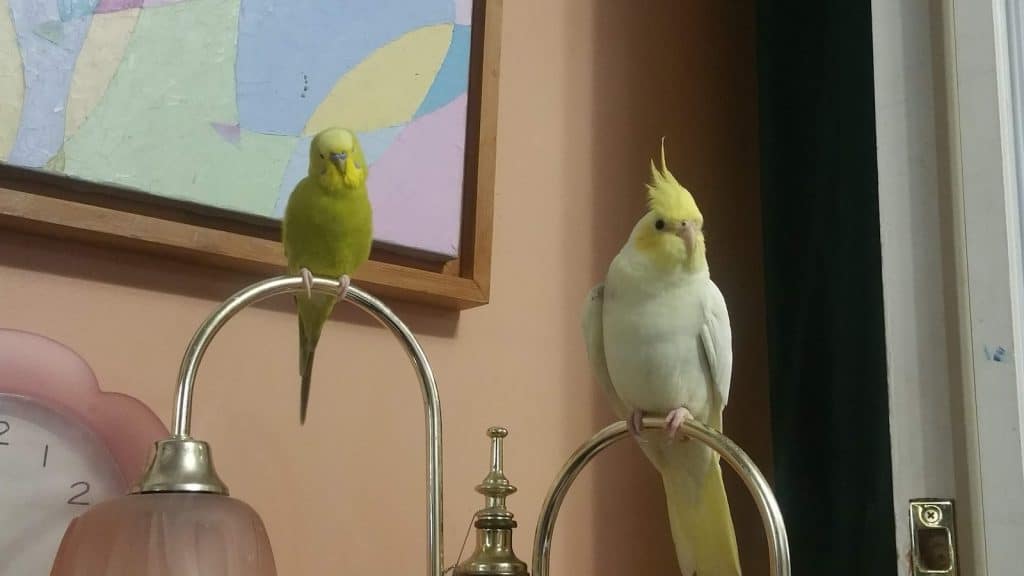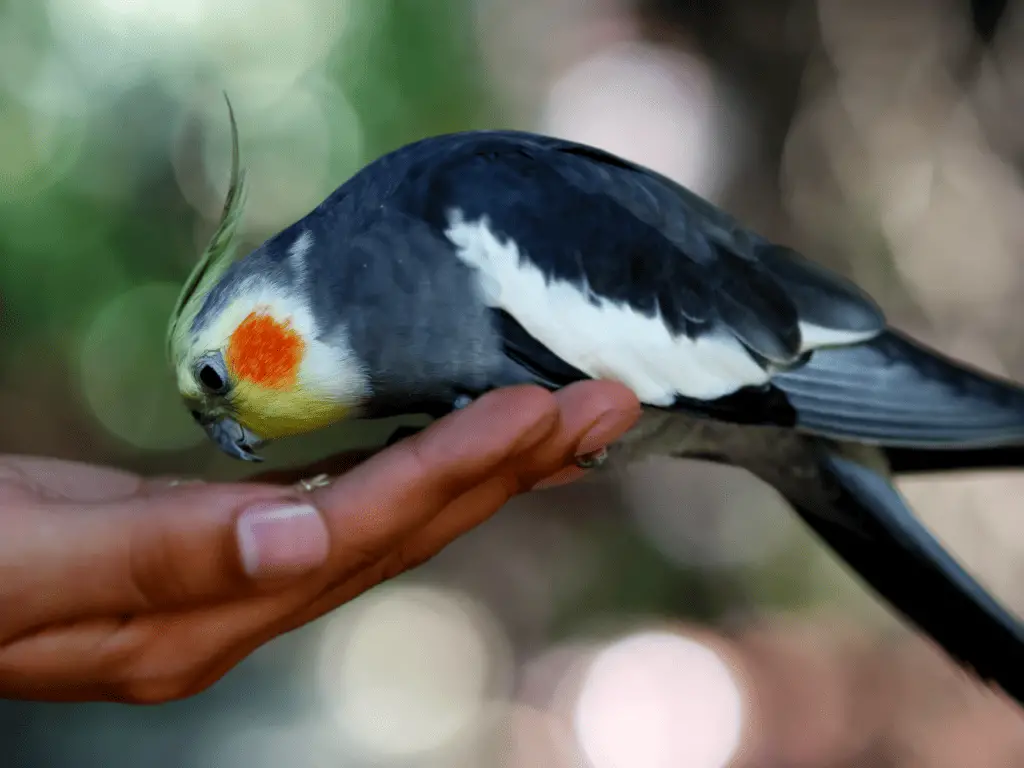Training your cockatiel to fly to you is a great way to bond with your pet bird and keep them safe from harm. It can also be an exciting experience for both of you! Teaching your cockatiel the basics of flight will take some time and patience, but it’s well worth the effort in the end. With just a few simple steps, you can have your feathered friend flying right into your arms. In this blog post, we’ll show you how to train a cockatiel to fly safely and reliably back home every time – no matter where they might wander off too!
How to Train a Cockatiel to Fly to You? : Step-by-Step Guide

Cockatiels are beloved pets for their playful and affectionate nature. As with all pets, training and bonding with your cockatiel is an important aspect of being a responsible pet owner. One fun way to build a strong bond with your cockatiel is to train it to fly to you. Training free flight can be a great way to keep your pet safe and secure, as well as enjoy some nice quality time together.
In this guide, we’ll go over the steps you need to follow to train your cockatiel to fly to you.
1. Understand the Basics of Flight Training
Before you begin teaching any bird flight training, it’s important to understand the basics. Cockatiels are naturally curious creatures and respond well to positive reinforcement. When starting out, you should have a clear goal and be consistent with your reward system. By providing treats or verbal praise after successful flights, your cockatiel will soon learn to associate good behavior with rewards.
2. Prepare Your Cockatiel for Flight Training
The first step in teaching your cockatiel to fly is to make sure they are comfortable with the idea of taking off. Start by introducing them to a near-by perch and slowly increase the distance between you and the perch until they become used to the idea of flying away from you. Once your pet bird no longer shows signs of fear when on a perch, it’s time to move on to more advanced flight training.
3. Establish a Safe and Secure Environment for Flight Training
To train cockatiels, It’s important to establish a safe and secure environment. Choose an area that is open and free of obstacles such as trees or other large objects. In addition, make sure to block off any windows or doors in the area to prevent escape attempts. Once you have chosen a suitable space, it’s time to start the flight training.
4. Introduce Your Cockatiel to Basic Commands
The best way to teach your cockatiel to fly is by introducing them to basic commands. Start off with simple commands such as ‘up’, ‘down’, and ‘come’. When they respond correctly, reward them with a treat or verbal praise. Once they become comfortable with the basic commands, it’s time to move on to more advanced control.
5. Practice Take-Offs and Landings with Your Cockatiel
Once your cockatiel is comfortable with the basic commands, it’s time to practice take-offs and landings. Start off by having them fly short distances from one perch to another and gradually increase the distance between the two perches.
When they make successful flights, reward them with a treat or verbal praise. As they get more comfortable, you can also begin to introduce additional commands such as ‘fly around’ or ‘come back here’. If your bird’s legs are experiencing difficulties, a special harness can be utilized to provide the necessary support and comfort.
6. Use Positive Reinforcement Throughout the Training Process

Positive reinforcement is essential for successful flight training. Whenever your cockatiel responds correctly, reward them with a treat or verbal praise. This will help to reinforce the idea that good behavior is rewarded and make them more likely to respond correctly in the future. If you find that your cockatiel is not responding correctly, try again from a shorter distance and increase the distance gradually as your pet bird becomes more comfortable.
7. Troubleshoot Common Problems During Flight Training
As with any type of training, you may encounter some issues during the flight training process. If your cockatiel seems fearful or unwilling to fly, try breaking up the sessions into smaller chunks and reduce the distance between take-offs and landings. Additionally, make sure to offer plenty of rewards throughout the process to maintain their enthusiasm. Recall training can also be useful in teaching your cockatiel to come back when called.
8. Celebrate Successful Flights!
At the end of each successful flight session, it’s important to celebrate and reward your pet bird for its hard work. Give them a special treat or verbal praise and always make sure to express your excitement and enthusiasm. This will help to reinforce the idea that good behavior is rewarded and ensure a positive experience during future flights.
The bird starts to understand that it has done something right, which will encourage them to keep learning and become more comfortable with the process of flight training.
Tips for Successful Training

- Be patient and consistent: Flight training can be a lengthy process and it’s important to remain patient and consistent throughout the duration of the training.
- Keep training sessions short and enjoyable: Make sure to keep training sessions short and enjoyable for your pet bird to ensure that they stay engaged and excited about the process.
- Open the cage door before each flight to make the bird comfortable: This will help to ensure that your cockatiel is feeling comfortable and secure before beginning the training session.
- Gradually increase the distance and difficulty of flights: As your cockatiel gets more comfortable, gradually increase the distance and difficulty of flights to keep them engaged and challenge them. Flight training is a great way to bond with your pet bird and help them develop their natural flying skills.
What to avoid during flight training?
– Don’t rush the process: Flight training takes time and it’s important to be patient during the entire process.
– Don’t use negative reinforcement: Negative reinforcement can lead to fear and frustration, which can make your cockatiel resistant to future flights.
– Avoid using excessive treats or rewards: Too many treats can be unhealthy for your bird and make them less likely to respond correctly. Use verbal praise instead to reward good behavior.
– Don’t let the bird get too tired: Flight training should not be too strenuous for your cockatiel, so make sure to keep it short and enjoyable. If your bird seems tired or unwilling to fly, take a break and try again later.
–Don’t let sharp objects or obstacles in the flight area: Make sure to remove any sharp or potentially dangerous objects from the flight area to ensure your bird’s safety.
If the bird spends its entire life in captivity, investing in flight training can still be beneficial. Flight training will help to keep your cockatiel mentally and physically stimulated, increasing their overall health and well-being. It also provides an opportunity for you to bond with your pet bird, strengthening the relationship between you two.
Final thoughts: How to Train a Cockatiel to Fly to You?
Pet birds can be wonderful, loyal companions. Teaching your cockatiel to fly to you is a great way to strengthen the bond between you and your pet. With patience and consistent training, your cockatiel can learn how to fly back and forth from you reliably in no time! Just remember to offer plenty of rewards throughout the process and always celebrate their successes. With the right approach, you and your pet bird can enjoy a wonderful flight experience together. Good luck!
For other related articles:



